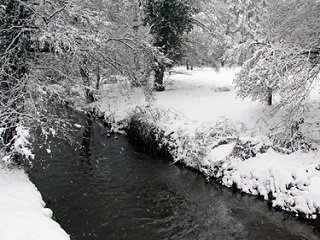 When the leaves start falling, it signals changes in fish behavior, no matter what species you’re after. Trout are no different. Places where you’d normally find trout in the warmer months will often clear out once winter hits. Today we’ll take a look at where you should search for trout this winter.
When the leaves start falling, it signals changes in fish behavior, no matter what species you’re after. Trout are no different. Places where you’d normally find trout in the warmer months will often clear out once winter hits. Today we’ll take a look at where you should search for trout this winter.
As the trout food supply dwindles, water temperatures drop, and vegetation recedes, the need for protection from winter floods, anchor ice, and predators will be their main concern. One big factor you’ll want to locate when you’re seeking winter trout is protection from predators and the current. If a location offers this, there’s a good bet trout will hold there.
During the spring and summer, the need to eat is as important to trout as protection from enemies, as long as there nearby cover when danger arises. For this reason, look for locations that offer cover, such as logjams. Rocks offer cover, as well, but there’s less turbulent water around logjams, so if you find such a place, start there.
You’ll also want to keep an eye out for slow, but not stagnant currents. Water that is nearly still does not bring food to the fish. Limit your search to waters more than three or four feet deep, as well.
Springs along the streambank offer prime winter trout action, too. Groundwater is warmer than surface water during the winter. You can identify springs easily by spotting patches of green plants growing in their warmer water. You can also find springs on very cold mornings by looking for tiny patches of fog along the bank.
It’s no secret that changes in the seasons mean changes in fish behavior, but you don’t have to let that stifle your results when you’re targeting trout this winter. Use the tips outlined today to begin your search and you’ll be in good shape.








